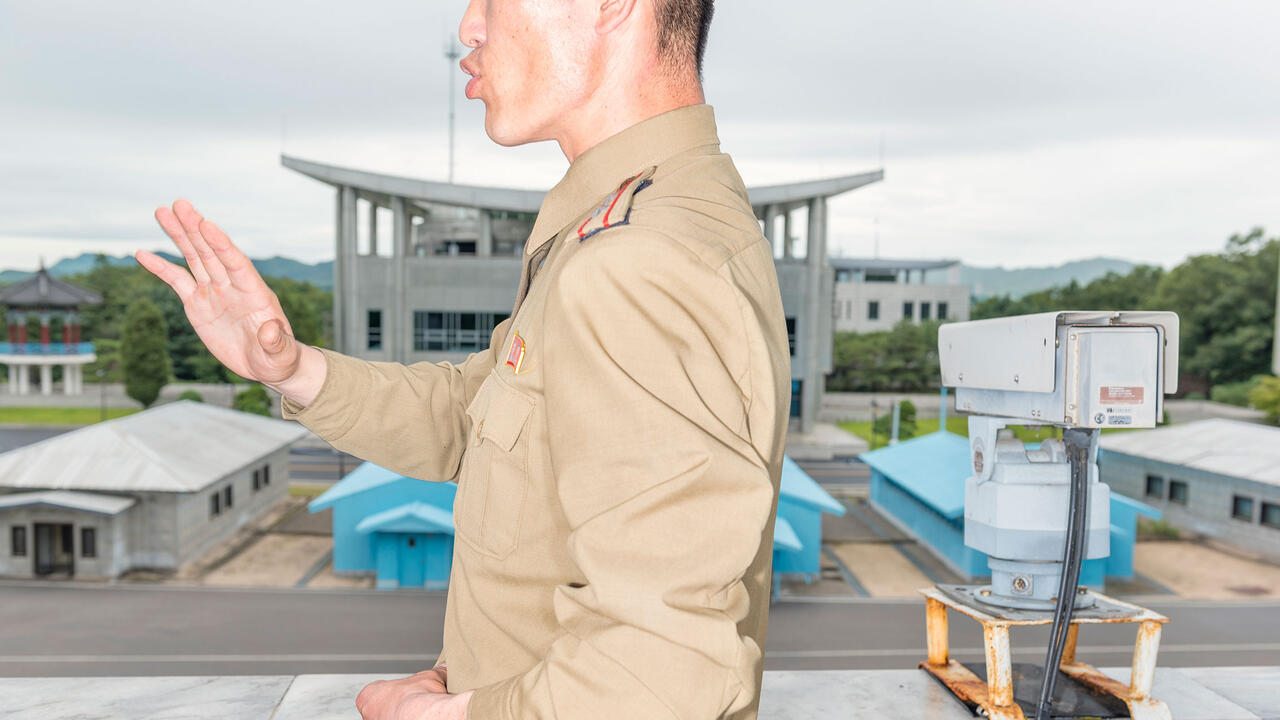‘Santhal Family...’ Gathers the Objects that History Would Have Imagined Into Fiction
Artists responded to the first public Modernist sculpture in India at Museum van Hedendaagse Kunst Antwerpen, Antwerp, Belgium
Artists responded to the first public Modernist sculpture in India at Museum van Hedendaagse Kunst Antwerpen, Antwerp, Belgium

Santhal Family, widely considered to be the first public Modernist sculpture in India, was made by Ramkinkar Baij in 1938. It’s a peculiarly familiar work, depicting a mother, father, child and dog from the Santhal tribe, carrying their few possessions with them to a new life.
For the exhibition ‘Santhal Family: Positions around an Indian Sculpture’ the curator Grant Watson in collaboration with Suman Gopinath and Anshuman Dasgupta invited a broad range of international artists to respond to the sculpture, embodying and also reflecting on contemporary discussions about ideas of social mobility and artistic practice. As a concept Baij’s Santhal Family sits firmly at the centre of this exhibition, with concentric circles of interest overlapping and connecting across different cultures and generations.
The first thing to observe is that this feels like a massive show, too large perhaps. In addition to works made by individual artists, there is a significant number of groups participating – including Calcutta Art Research, the Indian People’s Theatre Association, Kerala Radicals and Raqs Media Collective – and while it is a pleasure to have an opportunity to see so much work that is not often shown in Europe, the sheer quantity is somewhat dizzying.
The second observation, perhaps more key, is that ‘Santhal Family…’ ought not to have been an exhibition at all. Might the project not have found its form better as a symposium or even a book? For many of the complex cultural questions of ‘unbelonging’ (as discussed by Geeta Kapur and Irit Rogoff in an event at MuHKA that took place during the exhibition) can’t be tethered by location, or rather more specifically ‘site’, and consistently shake off attempts at fixing meaning. This is, of course, a somewhat specious point on my part, in that it could be applied to almost anything – ‘Why do it like this? Why not like that?’ – but, with a project as ambitious and socially synchronic as this one, it deserves to be made.

Ramkinkar Baij: A Personality Study, by Ritwik Ghatak – one of India’s foremost film directors – is the centrepiece of the exhibition and certainly does much heavy work in establishing an intellectual mise en scène for Baij’s output. The short, unfinished documentary, shot by Ghatak in 1975 and completed by his son in 2008 for the exhibition, presents a series of strangely staged conversations between the director and his subject. Much of the soundtrack drops out, so Baij’s often impressionistic responses are never finalized, leaving the audience in a state of suspense. We can’t help but feel this is how Baij would have wanted it. When asked what his Buffalo/Fish (DATE?) sculpture means, Baij testily replies, ‘It doesn’t mean anything.’ And so each attempt by Ghatak to trawl the surface of Baij’s sculptures within a conventional question-and-answer format is rebuffed: his works’ innate texture, physical and conceptual, must be explored in detail by the individual in order to create his or her own meaning, reaffirming a recent observation that he is the sort of artist who makes ‘art historians despair’.
This is also true of the exhibition as a whole. The works that succeed best at plotting themselves in some way against (or maybe alongside) Santhal Family are those that slip outside a direct dialogical relationship with the sculpture, instead floating near it with an attitude of concentration or obtusely enacting it. Deceptively witty and easy to miss, Ashim Purkayastha’s Found Object/Objects (2003–7) is one such work, in which the artist has defaced, reclaimed and transformed a collection of 100, 500 and 1,000 rupee notes, all of which feature the face of Mohandas Ghandi. On each, the Mahatma has been altered in some way by hand (appearing, among other things, as Adolf Hitler, as Salvador Dalí, as a cowboy, as a Rastafarian, playing a flute, picking his nose and taking a drag on a cigarette), with the effect of destabilizing the iconography of recognition by creating a subtle shift in the use-value not only of the currency itself but also of Ghandi’s image. In this way Purkayastha manipulates subject and object, expressing an essential dislocation in his act of making.
The German artist Matti Braun transported a giant mound of sand from Santiniketan, where Santhal Family stands, and appeared to have dropped it in the gallery space. Untitled (2008) looks as though it has erupted from the gallery’s foundations, mutinying against the concrete floor, creating a physical ‘volatile dispersal’ of interpretation though its bitty presence. But this organic material does not ‘belong’ (it had to be sterilized in order to enter Belgium), so instead it remains sullenly enigmatic, perhaps signifying the failure of representation. ‘Santhal Family…’ does ultimately succeed in its complex task of gathering the objects that ‘history [has] imagined into fiction’, as Gayatri Chakravorty Spivak would have it. However it does so at a price, for the exhibition’s socio-political panorama is so encompassing and yet so detailed, that the flux this creates in its viewer is the very embodiment of disaffiliation, at once pushing us away, yet inviting us to look closer.
























